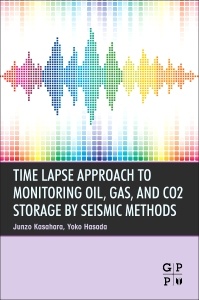Time Lapse Approach to Monitoring Oil, Gas, and CO2 Storage by Seismic Methods
Auteurs : Kasahara Junzo, Hasada Yoko

Time Lapse Approach to Monitoring Oil, Gas, and CO2 Storage by Seismic Methods delivers a new technology to geoscientists, well logging experts, and reservoir engineers, giving them a new basis on which to influence decisions on oil and gas reservoir management.
Named ACROSS (Accurately Controlled and Routinely Operated Signal System), this new evaluation method is presented to address more complex reservoirs, such as shale and heavy oil. The book also discusses prolonged production methods for enhanced oil recovery. The monitoring of storage zones for carbon capture are also included, all helping the petroleum and reservoir engineer to fully extend the life of a field and locate untapped pockets of additional oil and gas resources. Rounded out with case studies from locations such as Japan, Saudi Arabia, and Canada, this book will help readers, scientists, and engineers alike to better manage the life of their oil and gas resources and reservoirs.
Chapter 1. What is Time Lapse?
Chapter 2. Various Time-Lapse Methods
Chapter 3. Active Seismic Approach by Accurately Controlled and Routinely Operated Signal System
Chapter 4. Imaging of Temporal Changes by Backpropagation
Chapter 5. Passive Seismic Approach
Chapter 6. Previous Time-Lapse Studies Other Than Accurately Controlled and Routinely Operated Signal System Method
Chapter 7. Case Studies Based on Accurately Controlled and Routinely Operated Signal System Methodology
Chapter 8. Near-Surface Effects
Chapter 9. Repeatability
Chapter 10. Rock Physics
Conclusions
Dr. Hasada is a Research engineer with Daiwa Exploration and Consulting Co. Ltd., in Tokyo. Her education includes Dr. Sci. (Geophysics), Nagoya University, 2000, M.S. (Geophysics), Nagoya University, 1997, B.S. (Earth Sciences), Nagoya University, 1995
- Benefits both geoscientists and reservoir engineers to optimize complex reservoirs such as shale and heavy oil
- Explains a more accurate and cost efficient reservoir monitoring technology called ACROSS (Accurately Controlled and Routinely Operated Signal System)
- Illustrates real-world application through multiple case studies from around the world
Date de parution : 10-2016
Ouvrage de 216 p.
15x22.8 cm
Thèmes de Time Lapse Approach to Monitoring Oil, Gas, and CO2... :
Mots-clés :
4D seismic method; ACROSS method; ACROSS; Active seismic method; Aggregate; Air injection; Anisotropy; Backpropagation; Biot; Bitumen; Brazil; CCS; Chirp signal; CO2; Cross-correlation; Cross-hole seismic tomography; Cross-hole tomography; Daily variation; Distributed acoustic sensor; Distributed temperature sensor; EOR; Focal mechanism; Fracking; Frozen of ground; Gassmann model; Gulf of Mexico; Heavy oil; Hill model; Horizontal vibration; Hypocenter determination; Imaging; In Salah; InSAR; Ketzin; Line spectra; Line spectrum; Logging; Microearthquakes; Migration of influence zone; Nagaoka; Near-surface effects; Near-surface layer; Normalized root mean square; North Sea; Ocean bottom cable; Off Azerbaijan; Otway; Overburden effects; Passive seismic method; Permanent monitoring; Permanent reservoir monitoring; Polarization analysis; Porous media; Positioning; Precipitation effect; Precipitation; Quarry site; Refracted arrivals; Repeatability; Residual waveform; Reuss model; Reverse-time; S/N; saturation; Saudi Arabia; Seismic interferometry; Shale gas production; Shale gas; Shape of pores; Sleipner; Source rock; Source signature; Stacking; Steam-assisted gravitational drainage; Stress field; Surface wave; Sweet spot; Tar; Temperature; Time lapse; Time-lapse; Travel-time tomography; Vertical vibration; Voigt model; VSP; Water flow model; Waveform inversion; Weyburn-Midale



